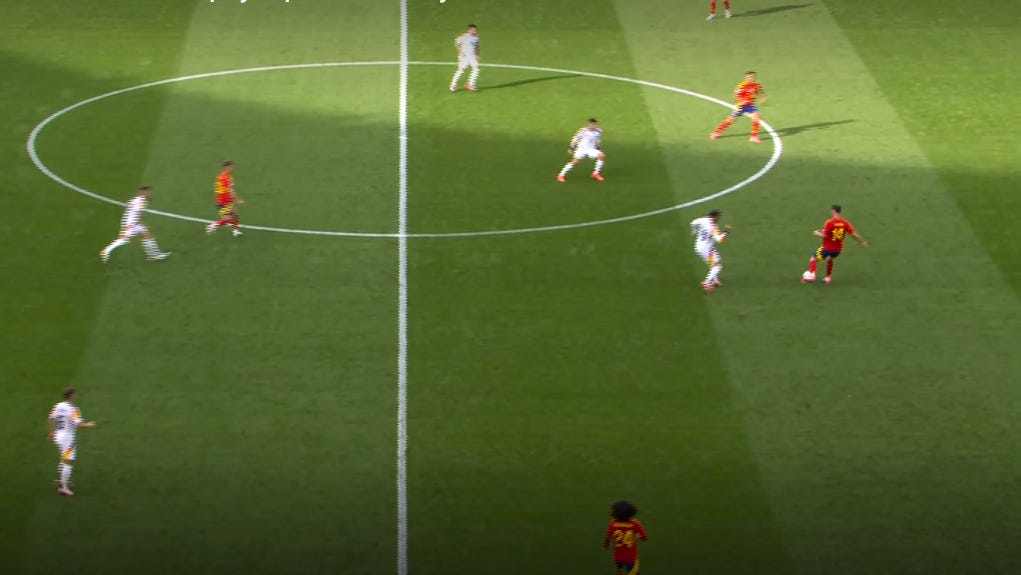Tactical Ideas from the Euros
After a very satisfying tournament, it was important to sit back reflect and talk about the ideas that stood out from the European Championships.
What makes football attractive? Is it keeping the ball preventing your opponents from dictating the game? Is it sitting back bringing the opponents towards you so you can create space behind them? Or is it aggressively chasing after the ball putting the opposition in distress?
Roughly, having the greater share of possession, creating a good number of chances per game, having a high tempo to your game and pressing your opponent intensely is considered to be an attractive way of playing the game. (Check this lovely thread by Ben Griffiths)
I made a sweeping statement before the Germany and Spain game trying to assert that teams which play the most attractive football usually don’t win tournaments. My immediate concern was pragmatism was once again on the verge of triumphing. Spain put a prompt end to that with Oyarzabal’s goal in the final. I was happy to be proven wrong.
There were a lot of intriguing aspects to the Euros here is my attempt at trying to deconstruct some of the ideas on display.
Third Man Runs
Something that a lot of teams at club level have a tendency to do is try to create space for themselves by dragging the opposition defense through intricate passing. Using the created space they try to overload the opposition with runs from midfield into the box to increase their chances of scoring.
Spain have been excellent throughout the tournament with their third man runs. Confusing opposition defences, causing lots of chaos in the opposition box. They utilized the ability of Yamal and Williams who are excellent crossers of the ball capable of a wide variety of crosses and supplemented them with players attacking the box.
Third man runs cause so many problems to the defensive line.

Now add a bit of movement into the box and watch the chaos unfold.
In a game of split second decisions such chaos forces a lot of problems that even the best box defenders would struggle with.
Indecision leads to goals.
Let’s look at some examples.
Starting with the opening goal last Sunday.
Olmo’s off the ball runs caused all sorts of headaches for the English midfield and defense. However, some smart decisions in build up created the goal.





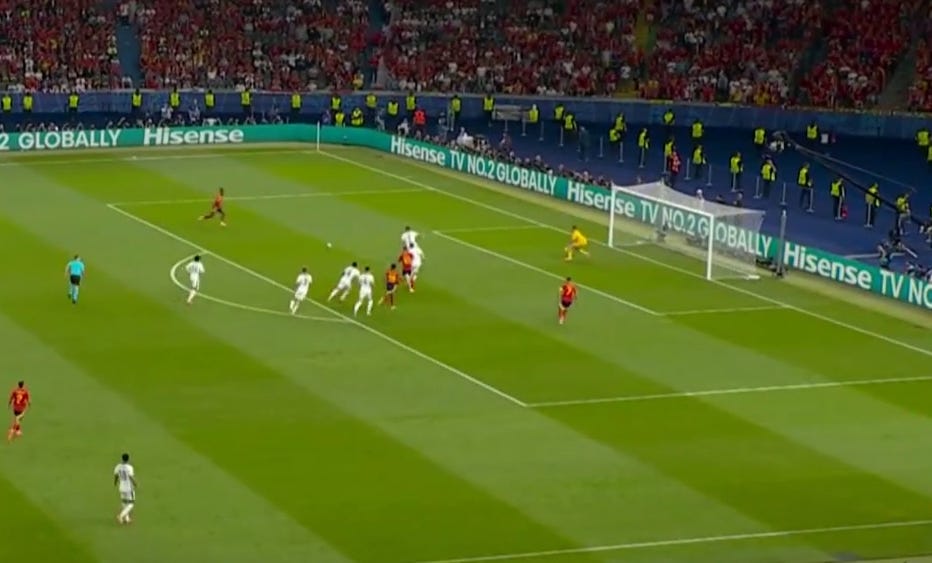
Constant communication is needed and any lapses in concentration are thoroughly punished.
Need more proof?
How about a match where Spain removed all their attacking outlets, where it looked destined to go to penalties but a third man run scored arguably the most important goal in their run it to the finals.
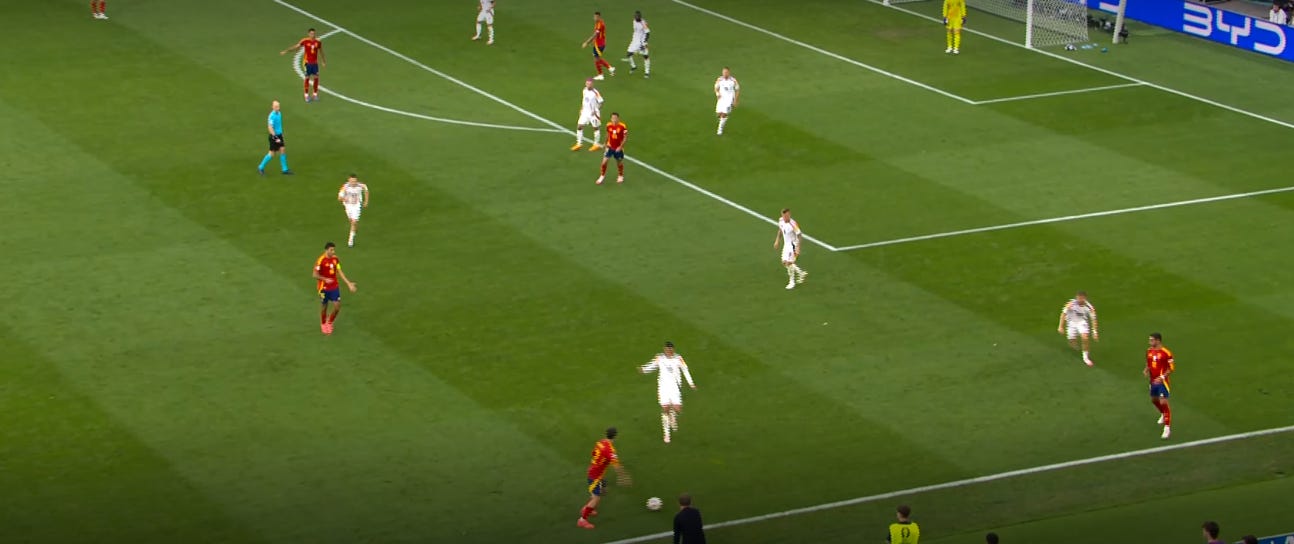



Doubt leads to uncertainty and indecision at crucial stages throwing even the most experienced individuals off their game.
Build up Patterns
To try and help teams move out from their half to the opposition half as fast as possible coaches try to create patterns followed by teams. These patterns usually reel the opposition towards you, so you can play behind them. The idea behind it is by pulling the opposition, you create a lot of space behind them.
A lot of clubs do it in a number of ways. A very common approach is the 4-2-2-2 shown here as it stretches the opposition a lot and allows a team to move from building out from the back to attacking the opposition half in no time.
England decide to go man for man out of possession. With their makeshift front two waiting to pounce on the Centre Backs receiving the ball. However, the threat of Yamal on the left is present so they do not fully commit to the press leaving outballs on either side.
Through quick passes Spain can quite easily break out and release one of their wingers.
Reel them in
You have a three man triangle while building out from the back which allows players a lot of time on the ball even if there are two players pressing them. When a player moves they vacate the space behind them. Using this idea they play through the press.

Secondly, notice how the two pivot players(6 and 8) are separated and are never on the same line. A flatter line decreases the distances that the opposition has to cover if they wanted to press them.
The first pass from the goal keeper to the centre back will invite the pressure. Now, the 6 must create separation between him and his presser. A small acceleration of 3-5 yards to beat his man. Pull his presser, while the team shifts and adjusts to play through the press.
England were a bit more passive with their press as seen before so they left the fullbacks open and decided to double up on Yamal instead.
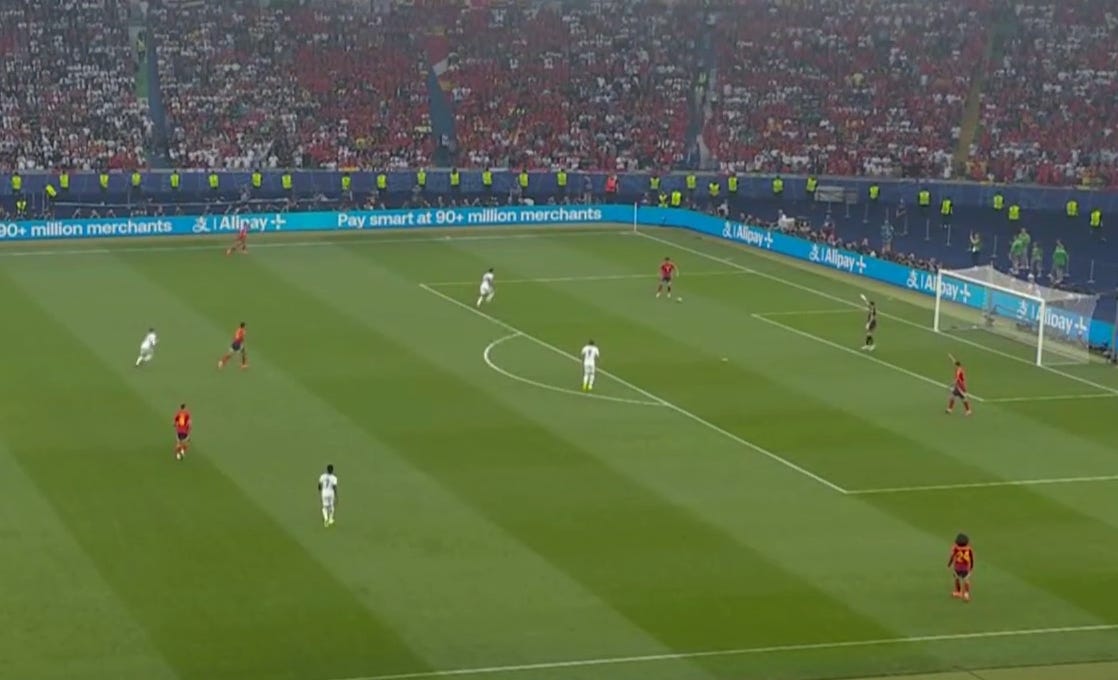
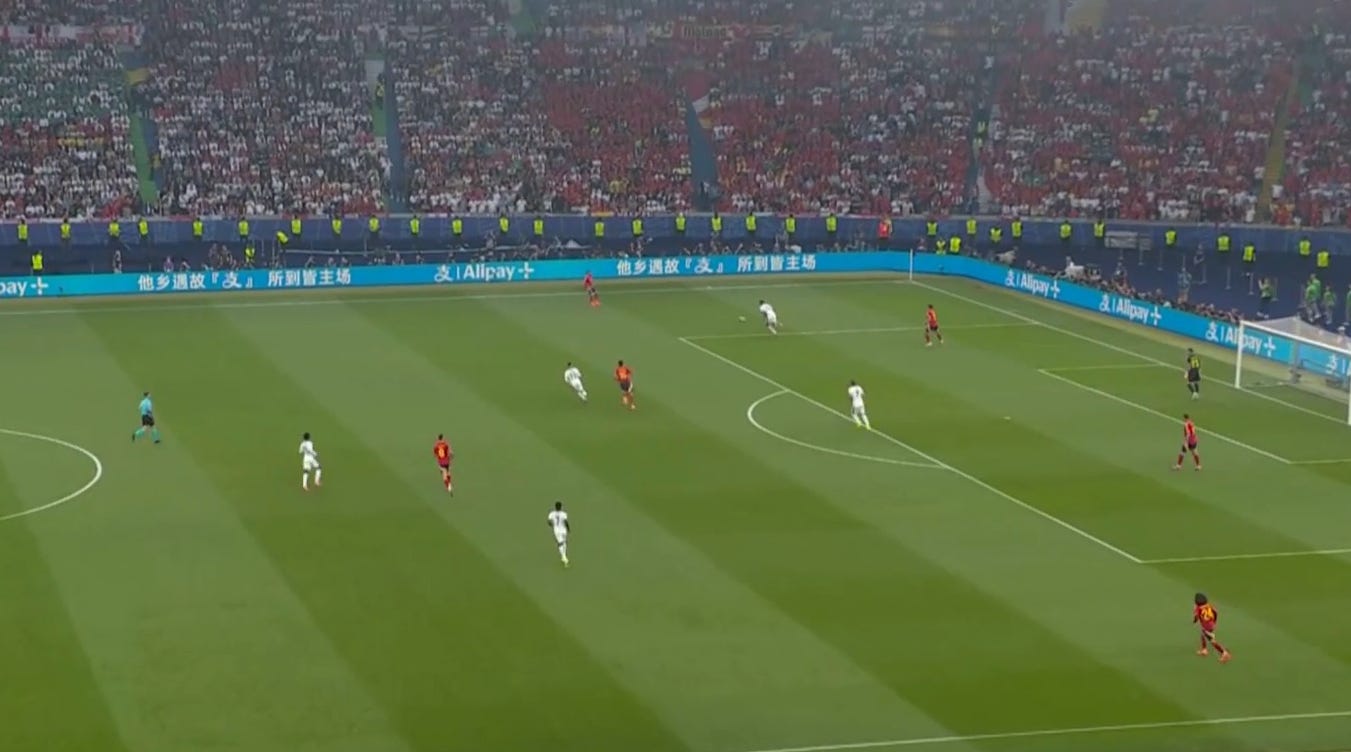
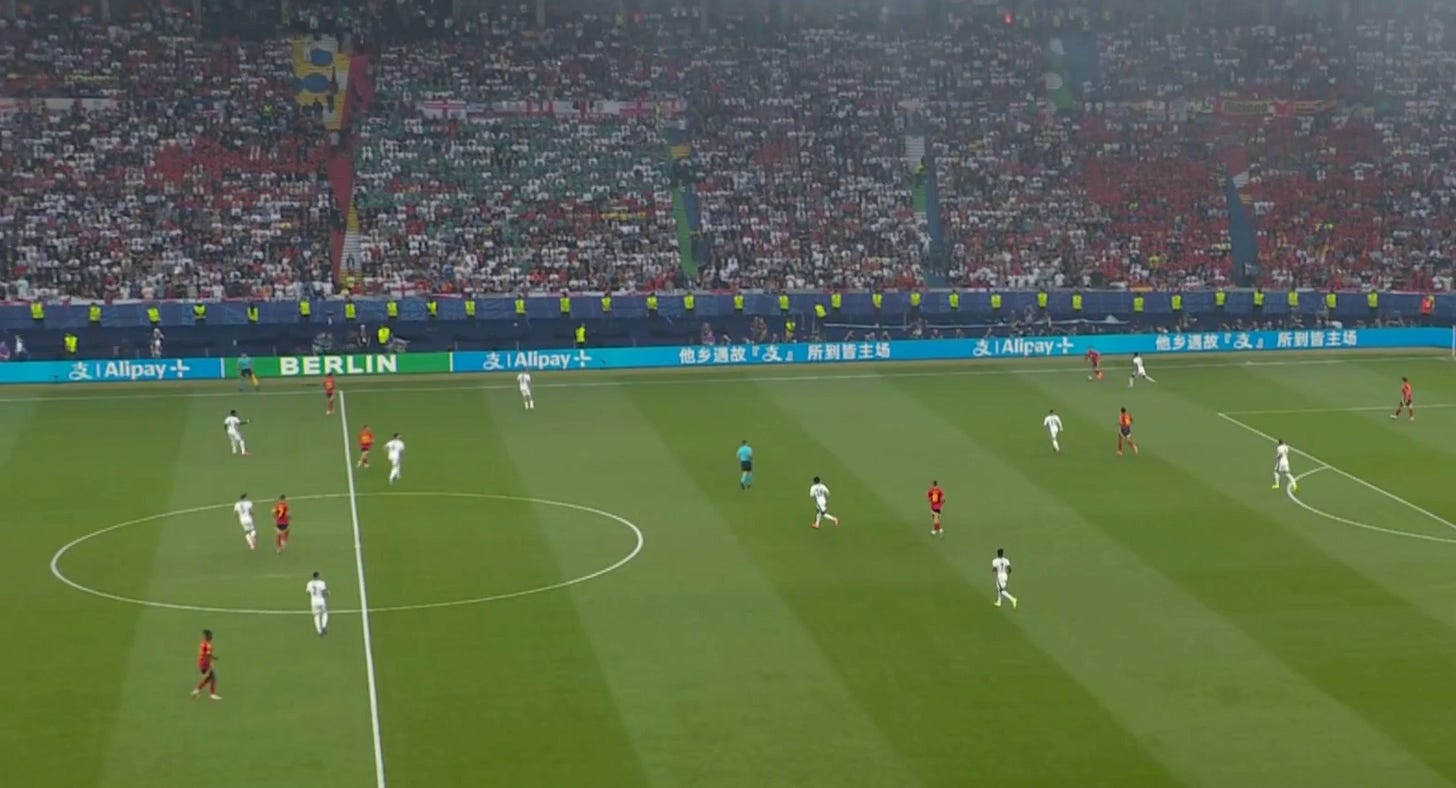

Now, Morata has so many options he can release a first time ball to Yamal who has acres of space in front of him. He can take a touch away from his marker and open it out to Williams on the far side. Guehi does really well to cut out the passing lane and wins the ball back.

England did change their press in the second half. Choosing to push Foden up next to Kane instead of Bellingham and doubling up on their pivot by being more adventurous(which led to a goal as seen earlier). This change was probably prompted with the withdrawal of Rodri.
This played into Spain’s hands as Olmo kept dropping to offer an option. They switched their system again moving into a lone presser starting with Kane before removing him for Watkins.
Controlling Space
Jurgen Klopp famously said, “Coaches will say that it's not important for their team to run more, and they prefer to make games the right way. I want to make games only the right way and run 10 km more.”
This theme of chasing the opponent rushing them and limiting the time they have is visible throughout German football.
Julian Nagelsmann adopts this principle but the manner is different. Nagelsmann is a manager who puts a lot of emphasis on space. Reducing space that the opponents have and increasing the space that his team has.
Secondly, something that he chooses to do out of possession that stands out is the way he forces opposition into disadvantageous positions. Now, it is impossible to have numerical superiority throughout the pitch. However, it is possible to remove passing lanes by smart pressing.
Nagelsmann like a lot of managers in the current era chooses to set up traps for the opposition forcing them into a disadvantageous scenario.
Let us look at some instances from the Spain vs Germany quarterfinals.

Another common scenario throughout the first half was the 3v3 matchup if Rodri dropped into the defensive line to dictate the tempo of the game and help with the progression of the ball.
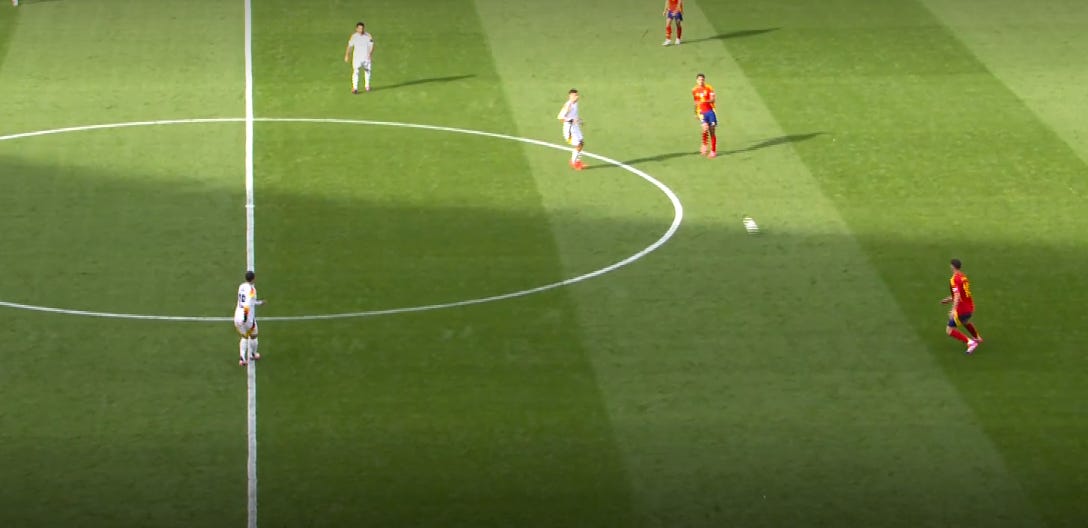

Germany actually ended up having more possession than Spain in the first half. They completely prevented Spain from moving the ball centrally causing a lot of problems in the first half. Something they rectified by forcing a lot of their midfielders in one line causing the Germans to narrow down on one side making a switch possible to someone like Yamal or Williams on the other side.
Spain won the tournament by adapting their style to the players they had. Luis De La Fuente carefully assessed his squad and brought out the best from his players by playing them in roles where they could maximize their output.
It was wonderful to see a team playing attractively triumphing over the pragmatists. Spain had a perfect record throughout the tournament and ran out as the deserved winners.

















